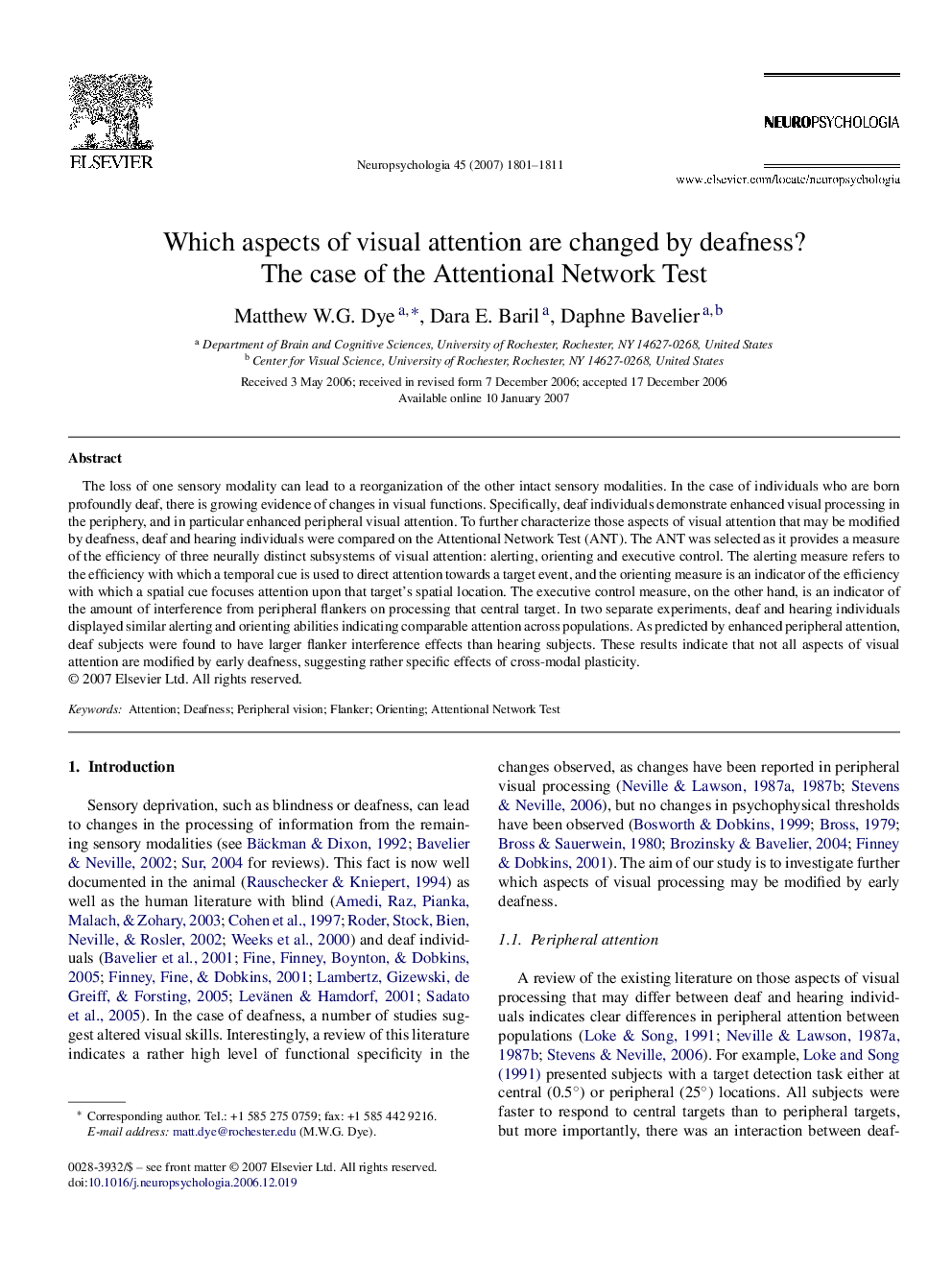| Article ID | Journal | Published Year | Pages | File Type |
|---|---|---|---|---|
| 10467135 | Neuropsychologia | 2007 | 11 Pages |
Abstract
The loss of one sensory modality can lead to a reorganization of the other intact sensory modalities. In the case of individuals who are born profoundly deaf, there is growing evidence of changes in visual functions. Specifically, deaf individuals demonstrate enhanced visual processing in the periphery, and in particular enhanced peripheral visual attention. To further characterize those aspects of visual attention that may be modified by deafness, deaf and hearing individuals were compared on the Attentional Network Test (ANT). The ANT was selected as it provides a measure of the efficiency of three neurally distinct subsystems of visual attention: alerting, orienting and executive control. The alerting measure refers to the efficiency with which a temporal cue is used to direct attention towards a target event, and the orienting measure is an indicator of the efficiency with which a spatial cue focuses attention upon that target's spatial location. The executive control measure, on the other hand, is an indicator of the amount of interference from peripheral flankers on processing that central target. In two separate experiments, deaf and hearing individuals displayed similar alerting and orienting abilities indicating comparable attention across populations. As predicted by enhanced peripheral attention, deaf subjects were found to have larger flanker interference effects than hearing subjects. These results indicate that not all aspects of visual attention are modified by early deafness, suggesting rather specific effects of cross-modal plasticity.
Related Topics
Life Sciences
Neuroscience
Behavioral Neuroscience
Authors
Matthew W.G. Dye, Dara E. Baril, Daphne Bavelier,
